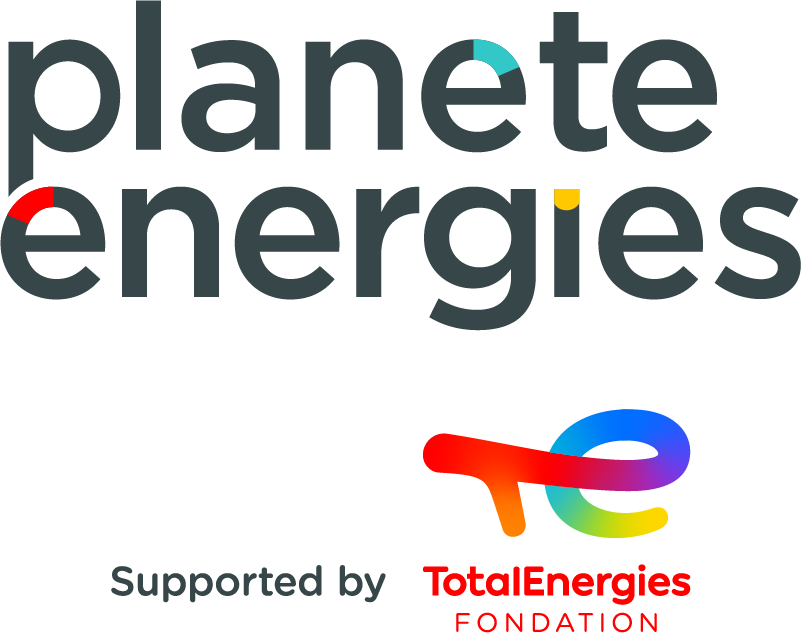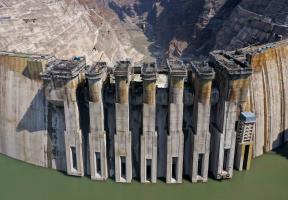Rare Metals: Increasingly Strategic
5 min read
The rapid growth since the 1990s of renewable energies, new engines, and digital technologies has created a growing demand for many metals that were originally produced in small quantities. Ensuring the availability of these “rare metals” has become a critical challenge: if they were to become scarce, the development of strategic industries such as IT, telephony, electric vehicles, and wind energy would be compromised.

© ED JONES / AFP - The photo shows workers in China handling waste from rare earth processing plants, near the city of Baotou in Inner Mongolia.
The production of electric batteries, permanent magnet technology, and several industrial processes, particularly in and automotive manufacturing, require these rare metals, to the extent that they are sometimes referred to as the “oil of the 21st century.”
What are “Rare” Metals and Earths?
“Rare metals” refer to metals that are produced in small quantities, at high cost, and are highly sought after by high-tech industries. The list of rare metals evolves with technological advances: there were about ten identified in the 1980s, and today there are about fifty. A potential shortage would have a significant economic impact. This is why they are also referred to as “critical” or “strategic” metals. Among them are cobalt, lithium, tungsten, antimony, cadmium, , etc.
“Rare earth” elements are a subset of these rare metals. They are the lanthanides in the periodic table of elements, to which yttrium and scandium are added. There are 17 rare earth elements in total. The most commonly used are cerium, lanthanum, and neodymium. They are not necessarily rare, but are characterized by the fact that they are mixed with other minerals and are therefore difficult and costly to isolate.
These rare metals and earths are essential to at least three sectors: large-scale production of electric batteries, miniaturization of motors, particularly wind turbines, and various industrial sectors (refining, glass and ceramics, alloys).
Lithium in Electric Batteries
The rise of smartphones and laptops has dramatically increased demand for compact batteries. The electric car market, which is expanding thanks to proactive public policies in Europe and China, requires medium-sized batteries. Finally, massive electricity storage capacities will eventually be needed for the development of intermittent renewable energies.
The technology currently dominating these markets today is the lithium-ion battery, which uses lithium, a critical metal. Research into other types of batteries that do not use “ionized” lithium is very active around the world, but lithium will remain indispensable for a long time to come. Lithium is primarily found in the beds of dry lakes and lagoons in desert areas. More than half of the world’s reserves are concentrated in three countries: Bolivia, Chile and Argentina. While there is no shortage at the moment, growing demand may increase the risk in the medium term. In addition, lithium-ion batteries also use cobalt and graphite (a form of carbon), which are also important for the industry.
Rare Metals and Rare Earths: Critical Raw Materials
Motors are found in a wide array of machinery. To run, they require magnetic elements, generally electromagnets comprising a ferrite core surrounded by a copper coil. However, some “rare earths” (including neodymium and dysprosium), can be used as “permanent” magnets, very small volumes of which can produce a very strong magnetic field. They are therefore used in applications that require miniaturization, ranging from ballistic missile guidance systems to high-end vacuum cleaners. Computer hard drives in particular can contain up to 4.5 grams of rare earths, a seemingly modest figure that becomes significant when considering the hundreds of millions of units manufactured at an industrial scale.
wind power consumes large quantities of permanent magnets. Wind turbines are very tall in order to capture strong winds, so their weight must be reduced. Approximately 150 kg of rare earths are used in the permanent magnet of an offshore wind turbine.
Lithium is primarily found in the beds of dry lakes and lagoons in desert areas. More than half of world’s reserves are concentrated in three countries: Bolivia, Chile and Argentina. While there is no shortage at the moment, growing demand may increase the risk in the medium term despite intensive research into lithium . In addition, lithium-ion batteries use cobalt and graphite (a form of carbon), two minerals that are also important for industry.
Industrial Sectors: Refining, Screens, Alloys
Several rare earths have “catalytic” properties, meaning they increase the rate of a chemical reaction without disrupting it.
- Cerium and lanthanum, for example, have emerged as key metals for refining processes and the catalytic converter technology used in the automotive industry, which reduce particulate emissions.
- The electronic and luminescent properties of rare earths are useful in the manufacture of screens and light sources. The glass and ceramics industry and the alloy industry also use these metals.
The Geopolitical Stakes of Rare Metals
The variety of these uses means that access to these strategic metals has become a major geopolitical issue. There are many deposits of “rare metals” scattered around the world, on land and on the seabed.
China is particularly well endowed, possessing nearly half of the world's known reserves. But above all, for years it has been developing both the extraction of raw materials and the “separation” of various rare earths. It does this at very low cost, so much so that many countries, such as the United States, have preferred to buy the final materials from China rather than develop their own supply chains. China controls nearly 90% of the market.
Geopolitical tensions have led several Western countries to take steps to regain control of these critical materials.
- Australia has risen to become the world's second largest producer in the last ten years.
- The United States is interested in rare earths from Ukraine and Greenland.
- Europe has unveiled a list of 47 strategic projects to better exploit critical materials found in European soil.
- France decided in early 2025 to conduct a national inventory of its mineral resources.
The Outlook in France
France's overseas territories are large mining reserves that are already in operation. New Caledonia already supplies nickel, chromium, and cobalt. French Guiana has potential for various metals: niobium, tantalum, lithium, cobalt, etc.
In mainland France, the Armorican Massif and the Massif Central are regions rich in strategic materials.
France also plans to increase its recycling and refining capacities. The Caremag site, which is due to come into service at the end of 2026 in Lacq (Pyrénées-Atlantiques), will recycle 2,000 tons of magnets and refine 5,000 tons of mining concentrates.





















